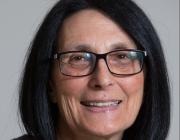Raya Morag (Born on December 15, 1954) in Jerusalem, Israel is a Professor of cinema studies at the Department of Communications and Journalism, at the Hebrew University of Jerusalem.
Her research and publications deal with post-traumatic cinema, perpetratorhood, and ethics; cinema, war, femininity, and masculinity; perpetrator trauma; documentary cinema; New German Cinema; Vietnam War Films; Israeli and Palestinian second Intifada cinema; New Cambodian Cinema; and corporeal-feminist film critique. Morag was the first to frame the “perpetrator trauma” paradigm in cinema trauma studies and helped pioneer a new discourse in trauma studies, which situates the perpetrator at its center.
Morag is a recipient of Israel Science Foundation (ISF) Grants for her projects on "The Perpetrator Figure and Societal Trauma in Cinema" (2013-2017) and "Cinema of Complicity and the Bystander: 1945-2017" (2018-2022).
Between 2014-2019, Morag served as Head of The Smart Family Institute of Communications.
Morag received The Hebrew University Rector Prize for 2014, awarded to distinguished scholars for excellence in research, teaching, and contribution to university academic life.
Between 2006-2014, Morag served as an Artistic Director of the Documentary Film Committee at the Rabinovich Fund for the Arts, Tel-Aviv. The Rabinovich Fund contributes considerable support to Israeli films.
Since 2008, Morag writes a cinema column in Haaretz, Literature and Culture.

